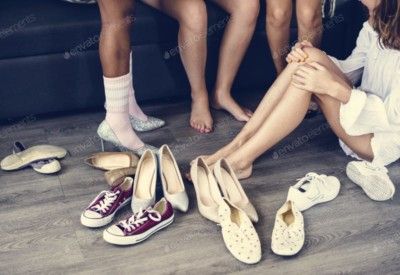Barefoot shoes are the healthiest shoes
As is known, man is not born in shoes. From its basic constitution, it is designed for barefoot walking, which is the healthiest for humans. For millions of years before the blessings of civilization, it was as normal for humans to roam the world without footwear as it is for all species of animals today.
We show in what way people benefit from barefoot running and why running in barefoot shoes is a good compromise.
What are barefoot shoes?
Barefoot shoes are adapted to the natural walking style of people running barefoot. They have an extremely thin, flexible sole, a wide cut in the forefoot to create toe room, a zero heel to promote natural bunion, a very light weight, and a flexible, elastic upper material.
Barefoot shoes allow the wearer to feel barefoot with shoes on. It is a paradox around the topic of shoes, which can only be resolved at second glance.
The advantages of barefoot running
Barefoot running offers the customer – properly applied – several advantages. Possible risks can be averted by using the new movement technique correctly. Firstly, the customer with barefoot shoes again sensitizes his sense of touch on the feet, which was once developed to a similar extent as the sense of touch on the hands.
Secondly, while conventional shoes impede the natural rolling process and the natural position of the foot, barefoot shoes promote this very process. The natural gait with a shift of the center of gravity from the heels to the balls of the feet reduces the load on the joints of the knees, back and feet by a factor of two to three, so that the risk of joint diseases is contained.
Thirdly, barefoot runners benefit from better blood circulation and air exchange of their feet. The feet get enough contact with oxygen again. Fourthly, the famous healer Sebastian Kneipp stated that a cold stimulus is a vital stimulus, on the basis of which he developed his Kneipp cure.
In this respect, the opposite of the modern assumption that cold feet would lead to disease is more likely to be the case. In reality, feet that are never exposed to the natural climate have no chance of developing an adequate immune system against bacteria of all kinds and fail under even the slightest pressure.
Barefoot runners, on the other hand, notice after several months that their immune system has been strengthened by barefoot running and that they are now much less susceptible to illness.
Fifth, by walking more consciously and dealing with minor unevenness, the muscles are encouraged to develop more than when walking with traditional shoes. This benefits the sense of balance and the nerves, which gradually regain their natural sensitivity.
The sensorimotor system and thus the interaction of muscles and nerves can develop naturally again. Sixth, toe-off allows the previously atrophied toes, which were de facto sidelined, to regain their natural function of supporting the tactile and locomotor processes of walking.
Why barefoot shoes are the solution
While studies support the positive outcomes of barefoot running, there have been some cases of added joint stress from barefoot running that have damaged the reputation of this innovative health-promoting method. Scientists dealt with these misguided developments.
They came to the conclusion that the enthusiasts of the new movement were putting too much strain on their feet, after which they overtaxed their bodies. After all, the feet are used to and adapted to life in socks and shoes, which is why the changeover should be more gentle.
Secondly, barefoot running only achieves its full effects when walking on natural surfaces such as meadows, fields, sand, meadows and forests, since the ancestors of modern man did not know asphalt roads and other paths that were actually designed for people wearing shoes. In addition, there would be a definite risk of injury from unconsciously stepping on sharp and hard objects.
As a conclusion, a cautious habituation to barefoot walking, supported by barefoot shoes, can be recommended. Barefoot shoes imitate the natural motion of walking and running, but the thin and flexible sole is quite capable of preventing major injuries to the feet from dangerous objects. Moreover, it is counterproductive to walk barefoot on artificial surfaces that are adapted to people wearing sturdy footwear.
